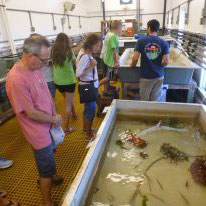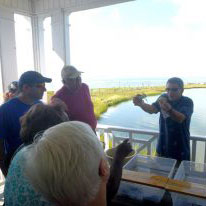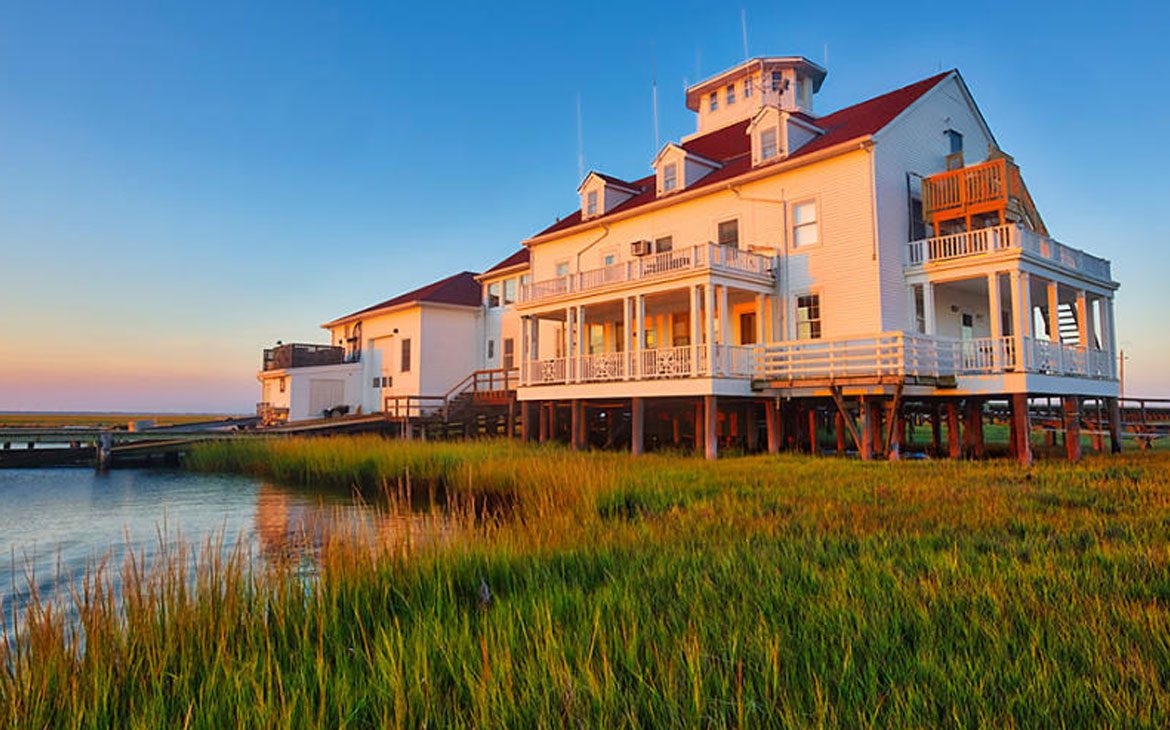The Rutgers University Marine Field Station (RUMFS) in Tuckerton, NJ, opened its doors to the public on September 17, with an invitation to come explore and learn about current marine science research, as well as the flora and fauna of the local estuary and marsh system of the Great Bay/Mullica River.
Over 600 visitors attended the open house from all over New Jersey and from as far away as New York, Pennsylvania and Virginia. RUMFS is a field facility of the Rutgers University Department of Marine and Coastal Sciences (DMCS). It is a working lab with ongoing graduate and postdoctoral level research occurring year-round and is uniquely situated across from the Little Egg Inlet in the Mullica River-Great Bay estuary, one of the most pristine estuaries on the east coast.
Dr. Jivoff talks about local and invasive crab species. Visitors took tours of the field station and learned about various research rojects currently underway. Interactive displays allowed both adults and children to view the larval stage of local marine species under a microscope. Dr. Paul Jivoff, a frequent collaborator on crab research in the Barnegat Bay, entertained visitors with a display and talk on local and invasive crab species. Visitors were also able to get a close look at local marine animals in the facility’s wet lab and kids made a fish-themed craft to take home.
The public was enthusiastic about their experience. Most were first-time visitors, who enjoyed all aspects of the tour, particularly the chance to interact with the researchers. One particularly welcome feedback appreciated by the RUMFS staff was, “It’s wonderful to see and talk to people who are thoroughly in love with their jobs!”
The major goal of RUMFS and DMCS, is to create a corridor for research, from the upper reaches of the Mullica River drainage basin, down through the Great Bay estuary, to the inner continental shelf.
Much of the current activity by resident scientists at RUMFS is focused on the life history and ecology of fishes, with special emphasis on the role of habitat for the dominant species in the estuary and on the continental shelf. Understanding the life history of fishes will help improve the ability to manage fish resources in the Middle Atlantic Bight, a coastal region running from Massachusetts to North Carolina.




